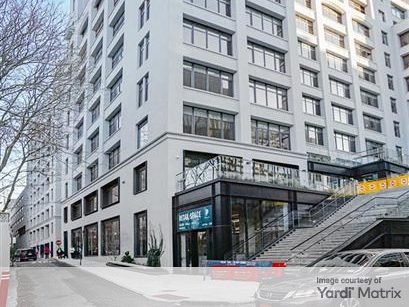Weathering Hurricanes Amid a Pandemic
Nearing the peak of 2020’s hurricane season, preparedness is vital. Doug Jones of JAG Insurance Group offers advice for property managers and owners with assets in southeastern areas prone to natural disasters.
Nearly three months into the hurricane season, the world is primarily focused on dealing with COVID-19’s impacts. But the U.S. must get ready for an even more tumultuous year, and literally weather the storms forecast by the Colorado State University: 20 named storms, nine hurricanes—with winds of 74 miles per hour or higher—and four major hurricanes that bring winds of 111 mph or higher.
The measures the Centers for Disease Control has advised everyone to take in order to keep safe during the health crisis—the virus that has been causing havoc around the globe—have impacted the disaster preparedness plan citizens have been used to: the go-to kit, evacuation routes, shelters and so on. And when “uncertainty” is the most-used word to describe the current state of affairs, one thing is certain: Natural disasters won’t wait. We talked to Managing Principal Doug Jones from Florida-based Jag Insurance Group about necessary preparations, insurance policy renewal, pricing and other aspects property managers with assets in hurricane-prone areas should be aware of.
READ ALSO: Florida’s Take on the Climate Crisis
A hurricane preparedness plan should already be in place at businesses and communities alike. What should it look like?
Jones: The plan really depends on what service your business is providing. The pandemic has thrown a wrench in a lot of proceedings, but one advantage is that businesses have adjusted to remote operations, so, in the event of a major hurricane, companies can now seamlessly transfer to remote work. Our firm formulated a hurricane plan that involved our employees working remotely. We were able to implement it with great success once the pandemic hit. If remote work isn’t in the cards, businesses should double-check all of their current coverages, take pictures of their space right before a storm and make sure all updates—electrical, roof etc.—are made so no claim is denied. In COVID-19 times, essential businesses need a special hurricane toolkit. How do these entities ensure both activity and the safety of their workers?
In COVID-19 times, essential businesses need a special hurricane toolkit. How do these entities ensure both activity and the safety of their workers?
Jones: Worker safety should be of the utmost importance to any business owner, and owners should effectively communicate the post-hurricane plan to be put in place. No staff member should have any doubt what the plan is if the business is forced to close due to a storm, or who to communicate with to indicate availability post-storm.
I would argue that, while COVID-19 presents a unique situation, the hurricane toolkit should be the same year to year. Even if a below-average activity season is predicted—an unlikely occurrence in recent years—decision-makers should prepare with the same intensity.
In addition to getting the supplemental flood insurance, how should property managers prepare for natural disasters?
Jones: They should educate tenants on HO-6 policies—designed specifically for condo owners—and what is covered under that policy and what’s covered under the condo association’s master policy. This would make things smoother and eliminate possible hurdles when it comes time to file a claim.
They should check their policies for exclusions and make sure their buildings are up to date with county code regulations. Nobody wants to explain to the board that a claim got denied because the roof on a building wasn’t updated. Tell us more about business interruption insurance. How will it be activated during a storm if mandated closures are still in effect?
Tell us more about business interruption insurance. How will it be activated during a storm if mandated closures are still in effect?
Jones: Business interruption is triggered when there is physical damage to the asset. Coverage kicks in depending on your deductible, which is a time amount rather than a monetary amount. If a hurricane hits and your property is damaged for longer than your deductible amount—usually 72 hours—you’re covered.
Municipalities across the country mandating closures to battle the spread of COVID-19 muddle the water. If your business was already closed due to a county mandate, then the hurricane damage didn’t actually interfere with your operations. Once the first claims hit, we’ll get a better understanding of how insurance companies will handle future filings.
Amid the pandemic, what types of coverages can cities implement when redeveloping plans for evacuations and shelters?
Jones: I would emphasize double-checking all policies to make sure you have the correct coverage needed. In the case of shelters, it would be prudent to check your liability policies. If people pack into a shelter due to a storm and it causes a cluster of COVID-19 cases, will your liability coverage cover it? Now is the time to have those conversations with your agent. Waiting until the storm comes means waiting until it’s too late to change your policy.
READ ALSO: Are Microgrids the Answer to Energy Disruptions?
What about personal property coverage? How will it be affected by this year’s hurricane season?
Jones: Personal property coverage is usually a percentage of the overall value of the home. It’s subject to the same deductibles and exclusions, so everything I’ve mentioned applies to personal property as well. Therefore, checking whether your policy coverage is replacement cost or actual cash value—which factors in depreciation—is important. To maximize coverage, if a major storm hits, replacement cost pays out what you paid for an item, rather than what it’s worth now.
What relief and endorsements are available to individuals looking to adapt their insurance policies?
Jones: I recommend getting the wind-driven rain endorsement. This is an endorsement that will provide coverage for rainwater that forces itself through a window. Flood coverage will insure against any losses with water seeping in through an opening, but wind-driven rain is considered a different loss and is usually excluded. Any extra layer of protection available to you should be taken advantage of. Don’t take whatever coverage you have now for granted. Let’s talk about high-rise coastal area flood and windstorm insurance. How does location influence pricing and the deductible percentage?
Let’s talk about high-rise coastal area flood and windstorm insurance. How does location influence pricing and the deductible percentage?
Jones: Location does affect the availability of coverage. First off, flood insurance is obviously much more expensive on the coast, as is homeowner’s insurance for those properties that have more exclusions. Also, in areas such as the tri-county, it’ll be near impossible to get a 1 percent hurricane deductible, as the percentage is a percentage of the building’s overall value.
Moreover, it’s important to understand how your deductible is activated. Is it per year or per occurrence? In areas like the tri-county, the per-year option is rarely available because of the frequency of storms in the area. More inland properties might have an opportunity at more favorable deductibles, but it pays to understand exactly how your deductible works and when it is actually activated.
What are the current predictions for sea level rise associated with Florida’s coastline?
Jones: Several counties are doing their best to mitigate the risk, but it won’t be surprising to see a few insurance companies pull out of certain areas. After the damage brought on by Hurricane Irma in Monroe County, several coastal areas were considered uninsurable.
There will always be coverage available. The cost, however, will only rise as climate change continues to create “superstorms.” Insurance is a reactive industry and it is now seeing the effects of sea level rise—as sea level rises, so too, will rates.








You must be logged in to post a comment.